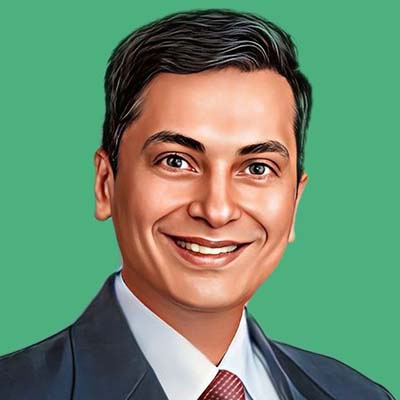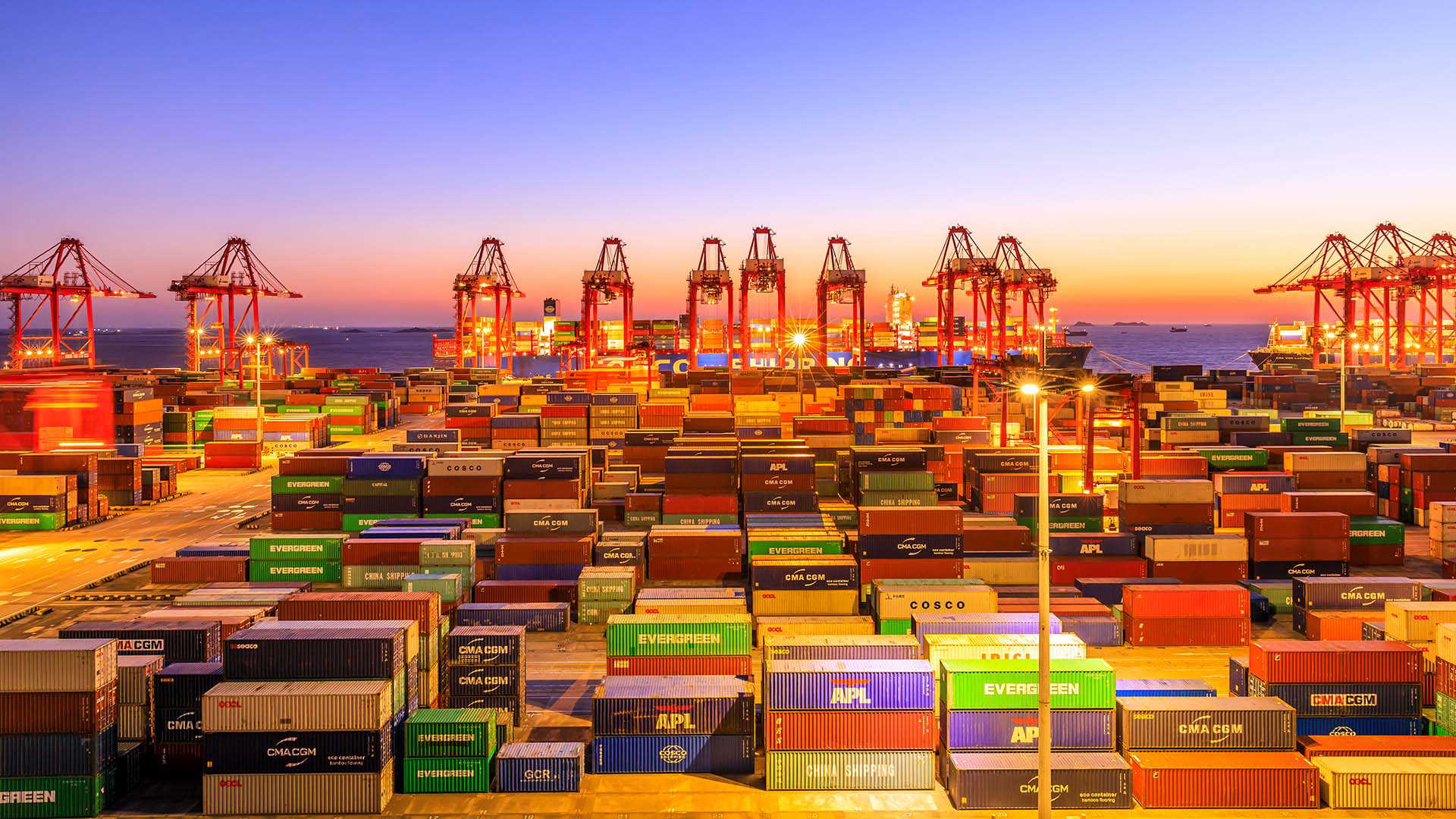

- Krishna Sampath
- APAC Head of Liquidity and Investment Solutions, BNP Paribas

- Tom Alford
- Deputy Editor, Treasury Management International
Reflections on a Region
The past 12 months have seen the emergence of some major challenges and opportunities in every region, not least APAC. Krishna Sampath, APAC Head of Liquidity and Investment Solutions, BNP Paribas, reflects here on the main events of 2022 before looking forward to the rest of 2023.
Central bank rate rises across the globe, inflation, geopolitical uncertainties, and the ongoing effects of the pandemic still conspire to unsettle the life of many treasurers in APAC. In particular, there is a continued need to grapple with the cost of liquidity.
“Many credit-worthy businesses had built up a significant war chest of cash during the early period of the pandemic, benefitting from significant central bank injections of liquidity into the system,” notes Sampath. “But since Q1 2022, when first the US Fed, then many other central banks, started to raise interest rates aggressively, the opportunity cost of holding excess cash versus servicing debt has significantly increased.”
Globally, corporate treasurers have more than ever needed to find the balance between holding sufficient working capital, and using excess cash to pay down debt, execute share buybacks or facilitate M&As to capitalise on growth opportunities. For APAC treasurers in particular, the region’s diverse mix of highly regulated and open markets adds to this challenge, says Sampath.
Those open markets – such as Singapore, Hong Kong, Australia and Japan – are where most of the large corporates tend to have their regional treasury centres and from where they manage their G3 and G7 currencies. However, he continues, much of their manufacturing is based in financially controlled jurisdictions such as India, China, South Korea and Taiwan. “Throughout the course of last year, many treasurers expended a great deal of energy managing these local currencies, and the FX risks that emerged because of increasing interest rates, and they continue to do so this year.”
But corporate treasurers are also facing supply-chain-derived issues, having to manage increasing cost pressures and the impact of deglobalisation on resource deployment, says Sampath. Indeed, he notes where once centralisation of teams and processes was a fairly obvious solution, the pandemic and various supply-chain disruptions have meant it may not now suit some situations.
This means treasurers have had to quickly reassess and reprioritise their approach. In some cases, processes have been decoupled, with “standby territories” deployed to manage them. This is potentially impacting longer-term plans, even for pursuits such as ESG. Sampath acknowledges the value of questioning the status quo, but accepts too that doing so in the face of multiple uncertainties is a nonetheless unwelcome challenge.
Flexible approach
The low interest rates that had been seen until 2022 saw some treasurers opting for longer tenors on their cash, just to earn an uptick on yield. “Many of them also started to explore off balance-sheet options such as MMFs, especially for negative yielding currencies such as the euro and JPY [Japanese yen],” comments Sampath. “Banks were even encouraging corporates to do this because they wanted to optimise their portfolios of negative-yielding currencies.”
However, with the change of mood at Q1 2022, as interest rates began their ascent, he saw overnight deposits swing back into favour, compounded by most treasurers’ aversion to longer tenors in a volatile environment. “With the US overnight interest rate now at 4.33% [at time of comment, January 27th 2023. It is now 5.06% as of 30th May 2023] with another 25 basis point rise expected, and the euro in positive territory, it’s likely to consolidate this view, even if the BoJ [Bank of Japan] continues its low-rate stance for now.”
Of course, in the current difficult environment, working capital optimisation is another priority. For Sampath, treasurers are indeed focusing far more on efficiency. “As we’ve seen, the full centralisation of processes has been challenged, and treasurers are now considering how best to remodel their structures to support their organisations in a more flexible manner.”
To achieve this, he suggests a path of digitisation. “But understand that technology is part of the answer, not the only answer,” cautions Sampath. “It’s about more than simply connecting an ERP to a bank system; it’s about streamlining collaboration between teams too. But when aiming for that, it is first essential to analyse the allocation and deployment of all related resources to discover how technology can fill the gaps and support growth.”
One area of impact for example could include AP/AR processes. If, through the right technology, these are tightly integrated across internal systems, and externally with a bank or a third-party SCF platform, it will help a business to extend DPO while reducing DSO, and in so doing, support the working capital health of itself and its suppliers.
Advantage APAC
There is no doubt that technology can be a game-changer, and the perception from Europe is often that the open markets of APAC are particularly well advanced in terms of readiness for the adoption of cutting-edge tools such as AI, blockchain and APIs, notes Sampath. Indeed, while in many regions the pandemic accelerated the digitisation of corporate treasuries, he says some APAC exponents have been particularly ambitious in their approach. “The deployment of automated liquidity solutions, capable of enhancing both visibility and yield, has been essential to the treasurer’s understanding of their positions across APAC, and has been readily adopted,” he confirms.
Furthermore, tools to help centralise liquidity at regional treasury centres (RTCs) have been deployed by APAC treasurers as a risk management measure, as a route to more efficient cash deployment, and as a way to leverage concentrated liquidity when rates were low. “And already this year we are starting to see an uptick in the number of RFPs from clients where cash and liquidity centralisation are prominently featured,” notes Sampath. “I can see this trend continuing for the remainder of this year as liquidity remains a focus for corporate treasurers.”
From Sampath’s perspective, these treasurers typically have three elements of revision in mind. “They’re looking at transparency, visibility, and control,” he states. “I think even though these are fundamental, treasurers are truly seeking more efficiency across these three elements by remodelling. And if they’re looking at that, they will be considering digitisation.”
Believing that it’s important for treasurers to establish “a good sense of where they are as soon as possible”, Sampath offers SWIFT gpi as an example of how transparency and liquidity management can be quickly enhanced. He adds that the next generation of virtual account management, available in certain APAC territories, is also offering greater control and visibility over some of the cash carried across the business.
And when it comes to the rapid emergence of real-time infrastructures in many APAC territories, he says this has enabled treasurers to query important information “as and when they need it”. Allied with API connectivity, these treasurers can now access real-time payments and collections. On the payments side, Sampath says doing so facilitates better control over how and when a business deploys its cash resources. Real-time collections provide corresponding immediate status updates on a business’ receivables. With more power at the treasurer’s fingertips and an obvious liquidity management upside, he feels APAC is in the midst of “a new on-demand era for treasurers”.
Change supporting growth
As 2023 continues to progress, and technology adoption gains momentum, so treasury will be better able to support corporate growth opportunities in APAC, says Sampath. Part of the exercise has already seen new business distribution models take shape with, for example, D2C sales and product-as-a-service (where subscription-based sales give more certainty over some cash flows) slowly gaining traction.
“These changes impact patterns of collection, but also drive further adjustments in the way a business looks at its AP/AR cycles and how its cash and inventory needs are forecast,” notes Sampath. “This has an impact on financing, from a treasury standpoint, which in turn also requires banking partners to revise how we support clients on their growth path.”
Aside from digitisation and changing business models, Sampath sees the need for tighter supply chain management on the APAC radar. Regardless of sector, recent disruptions have forced businesses to optimise their inventory because costs have risen so much. This means balancing the cost of warehousing stock versus the risk of non-delivery is now a concern.
There is also a need in APAC to reconsider how talent pools and human resource models are handled, says Sampath. “Decentralisation, or deglobalisation, has seen teams distributed across many different territories. It requires a new approach to the support model, especially on the treasury side.” Change will generally be driven by the need for resilience and serving the wider business in the most effective and efficient way. However, the pandemic has highlighted not just how if one location cannot function another must be ready to take over but also that many professionals now see remote working as part of their normal working life and that it must be accommodated.
Prioritising ESG
Perhaps one of the hottest topics for 2023 in the treasury space will be ESG, says Sampath. It’s been simmering for a number of years in APAC, somewhat in the shadow of uptake in Western markets. However, while he acknowledges that European and North American clients have been more active in the ESG space than their Asian counterparts, momentum is gathering.
“Many large Asian corporates, especially those based in India, China, South Korea, and Japan with global ambitions, have now clearly defined ESG agendas. It’s critical for their investors and consumers and for access to the capital markets.” And with notably increased interest from large Asian clients in IT, pharmaceuticals, and semiconductors, Sampath is expecting a “very strong pipeline” this year.
As treasurers prioritise some of their mid- to long-term ESG projects it may be necessary to regroup resources and even reconsider some of their other priorities, comments Sampath. This may be best executed by coupling this effort with their digitisation projects, for example by incorporating some ESG KPIs as they seek to replace legacy paper trails between teams with new digital flows.
Many large Asian corporates, especially those based in India, China, South Korea, and Japan with global ambitions, have now clearly defined ESG agendas.
To maintain the impetus, especially given the current economic climate, Sampath adds that it’s critical for corporates to clearly articulate the financial incentives of their ESG strategies, both to internal and external stakeholders. For this reason, he sees the role of the Chief Sustainability Officer in many cases transitioning to the CFO’s office, “because ultimately I think ESG strategies will be linked”.
It’s very clear to Sampath too that ESG in commercial life is here to stay. Having a clear, actionable ESG plan for corporates, and corporate treasurers, is expected by investors and by consumers, he says. “Naturally, some corporates are more ambitious than others in terms of their ESG agenda, but the key driver that will determine the success of all initiatives will be the financial benefits that accrue for the business and, ultimately, its investors.”
For example, if a corporate sets up a sustainable SCF programme for its suppliers, and the right bank incentives reduce the costs compared with a standard SCF programme, then there’s an immediate proven benefit for all, he says.
Similarly, if a bank offers qualifying clients higher yields on its sustainable deposits than its regular deposits, then the financial incentive is obvious. In APAC, BNP Paribas has already booked sustainable deposits with more than 15 large MNCs and Asian corporates across 10 markets.
“Being able to connect the financial incentives of corporate ESG strategies to day-to-day functions in corporate treasury provides further impetus for corporates to deepen their engagement on this important subject,” says Sampath.
Of course, it also demonstrates how treasury can use ESG to add value, even with the ‘social’ element. Indeed, explains Sampath, treasurers can use ESG policy to cultivate a more diverse workforce, for example by recruiting from non-traditional talent pools to bring on board a range of experiences, perspectives and complementary skills that can help treasury enhance its service offering.
It is the role of the banking partner to add value to the client ESG journey too, notes Sampath. Banks should deliver appropriate products and financial incentives, from sustainable deposits that enable a corporate treasurer to take an easy first step in the implementation of their ESG strategy, to more complex products. But they must also be able to deliver in an advisory capacity.
In this respect, Sampath explains that BNP Paribas “has extensive experience in guiding corporates on ESG at a strategic level, and operationally in key areas such as selecting and establishing the KPIs, which are not only critical when accessing the sustainable capital markets, but also on the cash management side”. Clearly, the value of a good partner should never be underestimated.
The journey begins now
Indeed, Sampath observes that, because unlocking transparency, visibility and control is very important for a corporate treasurer in order to begin rethinking and reprioritising treasury’s response, “true treasury efficiency can be achieved through integration with a good transaction partner”.
Some of the fundamentals remain as strong as ever though. As transformation begins to take shape, that well-worn mantra of ‘cash is king’ – which continued to resonate for most businesses during the pandemic – is now ringing true as the rising interest rate and inflation cycle begins to bite around the globe. “Corporate treasures will still need to find the right balance between holding cash reserves and deploying their cash to reduce debt costs and growing their businesses,” says Sampath.
The need now, continues Sampath, is for treasurers to “take a long, hard look” at their set-ups and ensure they are not only mitigating their operational risks but also the rising tide of geopolitical risks. “Explore different technologies and strategies, make sure the right talent is available to you, but also seek out partners that can support you in that journey,” he says. “Investing in your treasury transformation journey today means you will be better positioned to meet the challenges of tomorrow.



